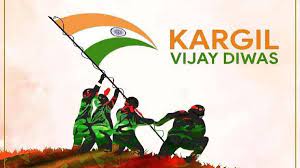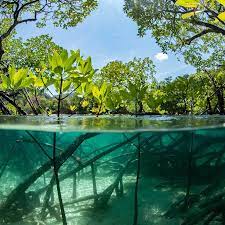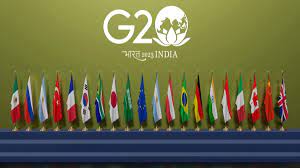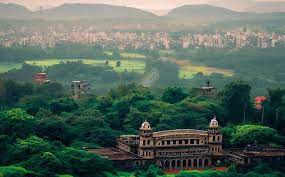Today’s Current Affairs: 27th Jul 2023 for UPSC IAS exams, State PSC exams, SSC CGL, State SSC, RRB, Railways, Banking Exam & IBPS, etc
Table of Contents
Kargil Vijay Diwas 2023:

The President and the Prime Minister recently paid their tributes to the armed forces on Kargil Vijay Diwas, acknowledging their extraordinary valour and the victory achieved.
- Kargil Vijay Diwas is celebrated on July 26 every year.
- The day commemorates the victory of the Indian armed forces in the Kargil War fought against Pakistan.
- The day is observed to pay tribute and honour the bravery and sacrifice of the soldiers in the war of 1999.
- The year 2023 marks the 24th anniversary of Kargil Vijay Diwas.
- Kargil War was fought between India and Pakistan at the Line of Control (LoC)in the Kargil district of Jammu and Kashmir.
- The Kargil War was an unexpected intrusion by Pakistani forces into Indian territory.
- They occupied key vantage points in the Kargil region, leading to intense military engagements.
- The Indian Army fought bravely and recaptured the famous ‘Tiger Hill’ and other important posts around under ‘Operation Vijay’ by evicting the Pakistani troops in the 1999 Kargil War.
- It was fought at extreme altitudes, with some of the battlegrounds reaching heights of over 18,000 feet.
- It lasted for approximately three months.
- The Indian Army employed heavy artillery, air power as well as major infantry operations during the Kargil War.
- In a first, the Indian side used the Bofors FH-77B howitzers to shoot down enemy positions nested at top of the mountains.
- Israel provided their Unmanned Aerial Vehicles (UAVs) to India during the conflict.
- It was the first ever war to be broadcasted live on TV channels in India.
International Day For The Conservation Of The Mangrove Ecosystem 2023:

International Day for the Conservation of the Mangrove Ecosystem is celebrated every year on July 26.
- International Day for the Conservation of the Mangrove Ecosystem is celebrated every year on July 26.
- This International Day was adopted by the General Conference of the UN Educational, Scientific and Cultural Organization (UNESCO) in 2015.
- Purpose is to raise awareness of the importance of mangrove ecosystems as “a unique, special and vulnerable ecosystem” and to promote solutions for their sustainable management, conservation and uses.
- Mangroves are unique coastal ecosystems found in tropical and subtropical regions around the world.
- They are characterized by dense, salt-tolerant trees and plants that thrive in the intertidal zones, where land and sea meet.
- They are typically found in sheltered coastal areas, estuaries, lagoons, and tidal flats, where they play a crucial role in maintaining the balance of the ecosystem.
- Some common species of mangrove trees include the Red Mangrove (Rhizophora spp.), Black Mangrove (Avicennia spp.), White Mangrove (Laguncularia racemosa), and the Buttonwood (Conocarpus erectus).
- They can survive extreme weather conditions and require low oxygen levels to survive.
- They cannot survive freezing temperatures and thus are found mainly in tropical and subtropical latitudes.
- Mangrove forests can store ten times more carbon per hectare than terrestrial forests.
African Union a Permanent Member Of The G-20:

India’s G-20 Sherpa recently said that the Indian Prime Minister’s proposal to make the African Union a permanent member of the G-20 has received an overwhelming response from the grouping.
- The African Union (AU) is a continental body consisting of the 55 member states that make up the countries of the African Continent.
- It was officially launched in 2002 and replaced its predecessor, the Organization of African Unity (OAU), which was founded in 1963.
- Primary Objective is to promote unity, cooperation, and development among African nations while advancing the continent’s interests on the global stage.
- It aims to strengthen political, economic, and social integration among African countries, with a vision of achieving an integrated, prosperous, and peaceful Africa.
- Headquarters: Addis Ababa, Ethiopia
- It is the highest decision-making body, consisting of the heads of state and government of member countries.
- Made up of foreign affairs ministers, handles policy matters and makes recommendations to the Assembly.
- AU Commission: Headquartered in Addis Ababa, is the administrative arm responsible for implementing the decisions of the Assembly and the Executive Council.
- The Peace and Security Council: Responsible for maintaining peace and security on the continent.
- The AU structure promotes the participation of African citizens and civil society through the Pan-African Parliament and the Economic, Social & Cultural Council (ECOSOCC).
UNESCO’s Asia Pacific Cultural Heritage Award:

The heritage Byculla Railway station which has been restored to its original glory, received the UNESCO award.
- The UNESCO Asia-Pacific Awards for Cultural Heritage Conservation is supported by a partnership between UNESCO and Ng Teng Fong Charitable Foundation since 2021.
- UNESCO introduced the new category, ‘Special Recognition for Sustainable Development’, in 2020, together with an updated set of Awards Criteria.
- It is to acknowledge the role and contribution of cultural heritage to sustainable development within the broader framework of the UN 2030 Agenda.
- Since 2000, UNESCO Asia-Pacific Awards for Cultural Heritage Conservation have been recognizing the achievement of the private sector and public-private initiatives in successfully conserving or restoring structures, places and properties of heritage value in the region.
Byculla Railway station:
- It was originally built in 1853.
- The first train of the country passed through Byculla station almost one-and-a-half centuries ago.
STARFIRE Algorithm:

Scientists at Raman Research Institute (RRI), an autonomous institute of the Department of Science and Technology, have developed an algorithm called STARFIRE
- STARFIRE Algorithm is called as the Simulation of Terrestrial Radio Frequency Interference in orbits around Earth (STARFIRE) algorithm.
- It can estimate the Radio Frequency Interference emitted by FM radio stations, Wi-Fi networks, mobile towers, radar, satellites, and communication devices, and use this calculation for designing and fine-tuning the antennas.
- It is capable of estimating and mapping the unwanted Radio Frequency Interference (RFI) signals in space.
- It can help design instruments that are capable of offering optimal operations in the presence of RFI and thereby, enriches the data obtained from the future space-based Astronomy missions.
- This algorithm can also be handy in orbit selection for future missions.
- The scientists used information on the FM transmitter stations from six countries in the world.
- Data from Canada (number of stations – 8,443), USA (28,072), Japan (Tokyo – 21), Australia (2,664), Germany (2,500), and South Africa (1,731) were used as inputs for developing this model.
Transforming Cantonment Towns:

The Ministry of Defence (MoD) has proposed to excise civil areas in 58 cantonments, with plans to merge them with State municipalities.
- Cantonment Board is an organization established to administer and manage the civilian population living in cantonment areas.
- It operates in accordance with the provisions of the Cantonment Act of 2006 and falls under the jurisdiction of the Union Defence Ministry.
- The boards comprise elected representatives as well as ex-officio and nominated members as per the Cantonments Act, 2006.
- A cantonment board consists of eight elected members, three nominated military members, three ex-officio members (station commander, garrison engineer and senior executive medical officer), and one representative of the district magistrate.
- The station commander of the cantonment is the ex-officio president of the board and an officer of the Indian Defence Estates Service (IDES) or Defence Estates Organisation is the chief executive officer and member-secretary of the board.
- The boards have a term of five years.
- The boards are classified into four categories depending on their size and population.
- Category I cantonments are those with populations above 50,000;
- Category II between 10,000 and 50,000;
- Category III between 2,500 and 10,000,
- Category IV with populations below 2,500.
- There are a total 66 cantonment boards are present in India.
Heli Summit 2023 And UDAN 5.2:

The Ministry of Civil Aviation inaugurated the Heli Summit 2023 and UDAN 5.2 in Khajuraho, Madhya Pradesh, focusing on regional connectivity through helicopters and small aircraft.
- Heli Summit 2023, jointly organized by the Ministry of Civil Aviation, Government of Madhya Pradesh, Pawan Hans Ltd., and Federation of Indian Chambers of Commerce and Industry (FICCI), emphasizes regional connectivity through helicopters and small aircraft.
- UDAN 5.2 aims to achieve last-mile connectivity with small aircraft (Category 1A <9 seats and Category 1 <20 seats) in remote and regional areas.
- UDAN 5.2 increases the viability gap funding (VGF) and reduces fare caps to enhance accessibility.
- HeliSewa mobile application is launched to create an ecosystem between helicopter operators and district authorities for seamless operations.
Russia’s Batagaika Crater : World’s Largest 1km-Long Permafrost

Russia’s Batagaika crater, the world’s largest 1km-long permafrost crater, expands due to global warming and thawing permafrost.
- Deforestation triggered underground permafrost melting, causing the crater’s growth in the Sakha Republic, Russia.
- It also holds dangerous organic carbon, exacerbating global warming.
- Russia is warming is occurring at an alarming rate, approximately 2.5 times faster than the global average.
- As a result, large areas of the country’s long-frozen tundra, covering about 65% of its landmass, are experiencing significant thawing, releasing potent greenhouse gases like methane.
- Permafrost is any ground that remains completely frozen—32°F (0°C) or colder—for at least two years straight.
- These permanently frozen grounds are most common in regions with high mountains and in Earth’s higher latitudes: near the North and South Poles.
India’s Ethanol Push:

At a G20 Energy Ministers’ meeting, the Indian PM stated that India has rolled out 20% ethanol-blended petrol this year and aims to cover the entire country by 2025.
- Ethanol is basically 9% pure alcohol that can be blended with petrol.
- It is different from the 94% rectified spirit which have applications in paints, and pharmaceuticals and 96% extra neutral alcohol that goes to make potable liquor.
- India’s ethanol production programme has come a long way in the past five years, both in terms of the quantities supplied by sugar mills/distilleries to oil marketing companies (OMCs) and the raw material used.
- India’s ethanol programme is no longer reliant on a single feedstock or crop.
- It has diversified only from molasses and cane to rice, maize and other grains as well.
- It will minimise supply fluctuations and price volatility on account of any one crop.
- The incorporation of new feedstocks can create new demand for grains.
PM-WANI:

The Digital India programme has three main vision areas: digital connectivity, software and services on demand, and digital empowerment of citizens.
- To achieve this, the creation of inter-operable public Wi-Fi hotspots called PM-WANI (Wi-Fi Access Network Interface) was proposed to provide affordable internet access to the common people, especially in rural and underserved areas.
- PM-WANI allows the last-mile distribution of broadband through Public Data Offices (PDOs) offering sachet-sized packages of internet for as low as Rs 5 to 10.
- This framework offers a business opportunity for aggregators (PDOAs) without additional licensing fees, fostering the growth of local nano-entrepreneurs who establish Wi-Fi hotspots and offer internet access to other users.
- It offers an affordable and reliable solution for underserved areas, benefiting ISPs and Telcos by expanding their customer base.
Mhadei Wildlife Sanctuary : Notify As Tiger Reserve

The Goa bench of the Bombay High Court has directed the Goa government to notify the Mhadei Wildlife Sanctuary as a tiger reserve.
- Mhadei Wildlife Sanctuary is in the northeast of Goa, in the taluka of Sattari.
- Its official declaration as a wildlife preserve came in 1999.
- The Mhadei River, known downstream as the Mandovi River, the lifeline of the state of Goa, originates in Karnataka, passes through the Mhadei Wildlife Sanctuary and meets the Arabian Sea at Panaji in Goa.
- The whole sanctuary acts as a catchment for the river.
- Prominent Waterfalls: Vazra Sakla Falls and the Virdi Falls.
- The cliff face near the Vazra Falls is notable for being the nesting grounds of the critically endangered Long-billed vultures. (Wildlife Protection)
- It has been declared an International Bird Area because of the presence of the Nilgiri wood pigeon, Malabar parakeet, Malabar grey hornbill, Grey-headed Bulbul, Rufous babbler, White-bellied blue-flycatcher and Crimson-backed sunbird.
- The three highest peaks in Goa are situated in the hill ranges of the sanctuary. They are Sonsogod (1027 mts), Talavche Sada (812 mts) and Vageri (725 mts).




